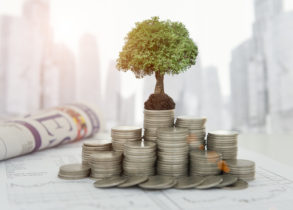Aug 21, 2017

GST has united India under a single tax rate but also created a set of questions which plague one and all. Here is a lowdown on the 5 most important questions related to GST and how it is impacting our daily life.
- What is the final tax slabs on your daily bills?
- Hotels and Lodges- For Hotels and Inns with a tariff above Rs 1000 but less than Rs 2500, Tax slab is 12% whereas for Hotels with a tariff above Rs 5000 are to be levied a tax rate of 28%.
- Transportation- 5% Tax slab on Transport services like railway and airways. 12% on Business class air tickets.
- Restaurants- Non-Ac Restaurants that do not serve alcohol will charge 12% GST on Food bills, this also includes local delivery restaurants. The Restaurants that serve Alcohol and are non-AC will charge 18% GST. Air conditioned and 5 Star restaurants will charge GST at 18% regardless of alcohol availability.
- Entertainments- Under GST, Cinema halls or any entertainment places will charge GST rate of 28% on the bill.
- What are the taxes that are replaced by GST;
There are two kinds of GST charged on a product or service, one on the State level and the other at the Central level.
Taxes at central level replaced by GST-
- Central Excise Duty
- Additional Excise Duty
- Service Tax
- Additional Customs Duty is commonly known as Countervailing Duty
- Special Additional Duty of Customs.
Taxes at State level replaced by GST-
- Subsuming of State Value Added Tax/Sales Tax
- Entertainment Tax (other than the tax levied by the local bodies), Central Sales Tax (levied by the Centre and collected by the States)
- Octroi and Entry tax
- Purchase Tax
- Luxury tax
- Taxes on lottery, betting, and gambling.
- What are CGST, IGST, SGST and how do they affect you?
The GST levied on the intra-State supply of goods or services by the Centre is Central GST (CGST) and that by the States is State GST (SGST). IGST is the integrated GST collected by the Center on the interstate supply of goods and services. For example, If Mukesh is a dealer in Maharashtra selling goods to a supplier Ramesh within the same state, 18% GST will be charged on the invoice for the service/goods out of which 9% will go to the Central government and 9% to Maharashtra government. On the contrary, if Mukesh was a dealer in Maharashtra selling goods to a supplier in Gujarat, 18% GST which would be 18% IGST.
- What has become costlier and what has become cheaper?
There are four slabs for the GST for both goods and services – 5 percent, 12 percent, 14 percent and 28 percent. There are also certain items that have been exempted from the tax base completely.
Items that have become cheaper post the introduction of GST include;
- Vehicles – Two-wheelers, Luxury/Large cars, and SUVs
- Branded goods – Under GST, 18% tax is charged on the bill which previously was up to 23-24%.
- For states paying 23% Entertainment tax on Cinemas will now pay only 18%. However, for states which had lower tax rates for Cinema, GST will make it costlier.
- For economy class, airfares are expected to shrink with a tax of 5 percent whereas business class fares will attract 12 percent GST becoming more expensive.
- Telecom services and excise are expected to get cheaper on the long run with the introduction of GST.
Products or Services that have become expensive post GST include;
- Vehicles- Smaller cars will become slightly expensive as they now fall under the bracket of 28% tax.
- Tea/Coffee- Previously taxed at 3-4% are now taxed at 5%.
- Home appliances like Air conditions, Washing machines, and Refrigerator have become more expensive post introduction of GST.
- Luxury goods have become more expensive as they also now fall under 28% tax bracket.
- Business class Air tickets have become costlier under GST.
- Impact of GST on EMIs
GST is enabling even the unorganized businesses to come under the organized sector by bringing them under the taxable bracket, thereby increasing their creditworthiness. Lenders will be more willing to shell out funds for equipment financing or lend them term loans post GST implementation. Following are the impacts of GST on various EMIs:
Home EMIs- Previously 15% tax on Home Emis has increased to 18% post-GST. The fixed rate home loan, on the other hand, was charged at 2%-3% of principal outstanding plus service tax at 15%.Post GST, it is 2%-3% of principal outstanding+18%. This is a marginal increase which will benefit us in the long term.
Car EMI’s-The implementation of GST is a boon for those wanting to purchase a luxury car. Their prices are set to reduce by 2%-6% due to the reduction in the overall tax incidence by about 7%-12%. For car loans, after calculating the processing charges and prepayment charges, the service tax of 15% is added. Post-GST, this rate and other charges relating to a car loan will now come under the 18% tax rate.
Thus this guide summarizes and highlights on how GST is affecting our daily life and the impact of it on our wallets.






